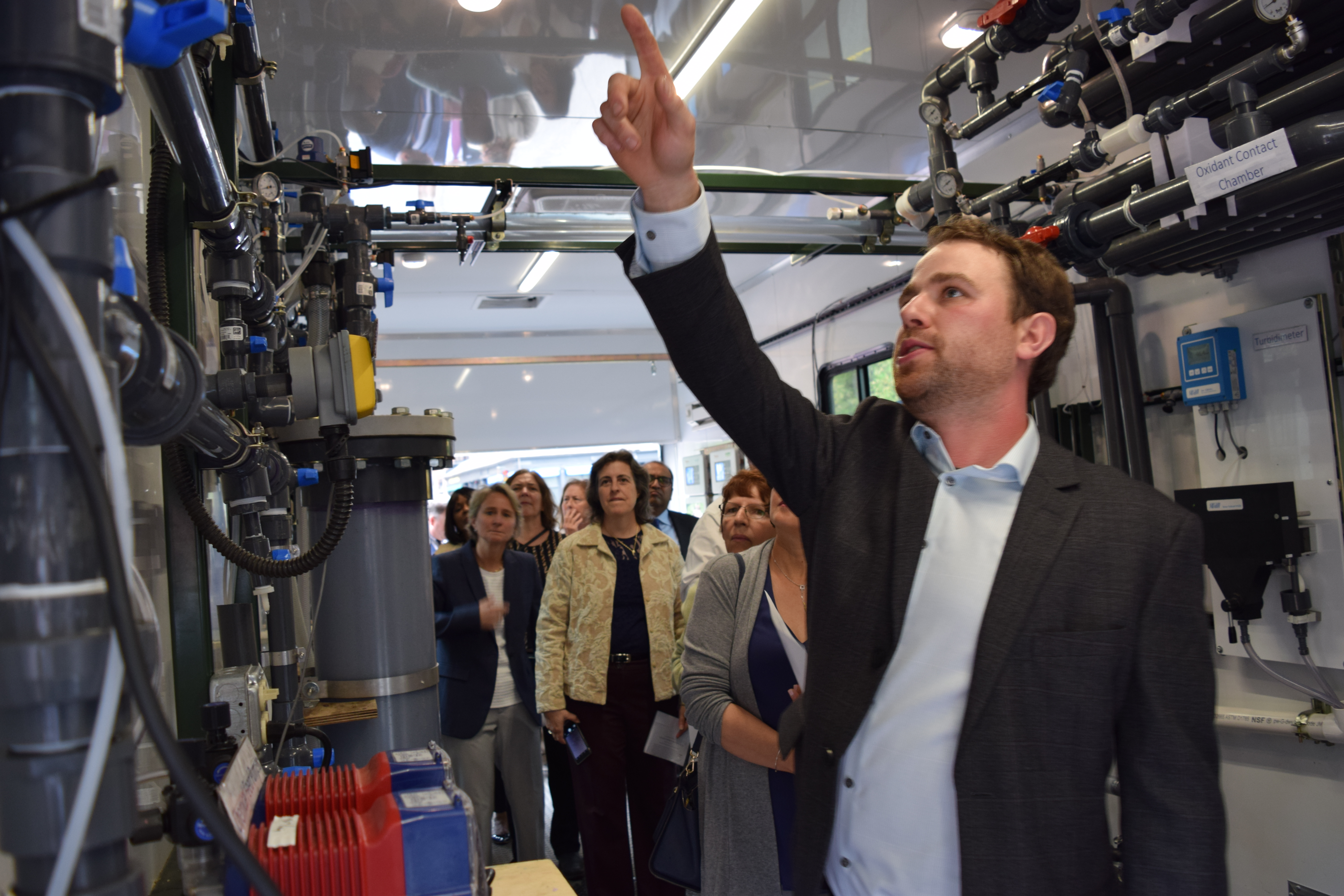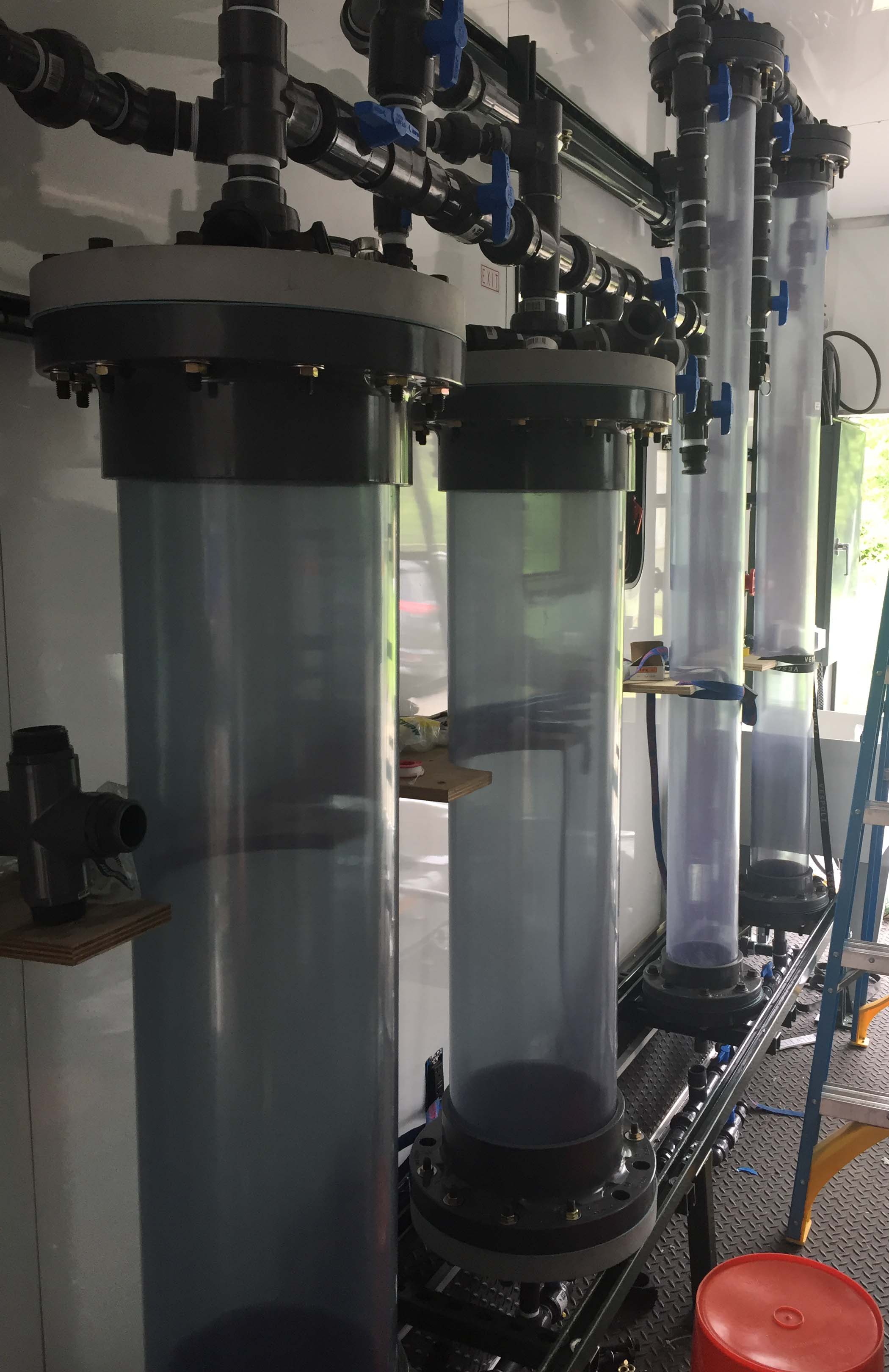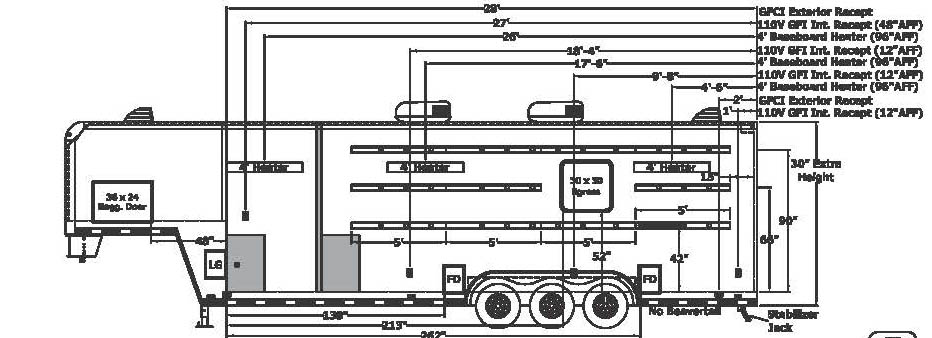UMass Mobile Water Innovation Lab
-
Overview
This facility was developed with the help of the MA Clean Energy Center, NEWIN and several corporate partners. The UMWIL is owned and operated by the University of Massachusetts at Amherst. It's mission  is four fold: (1) to test new treatment technologies in continuous flow pilot scale, (2) to assist businesses in developing new treatment technologies, (3) to provide a platform for 3rd party evaluation of innovative water treatment technologies, and (4) to provide a hands-on classroom for students studying water treatment technologies. For more, see the WINSSS Center web page.
is four fold: (1) to test new treatment technologies in continuous flow pilot scale, (2) to assist businesses in developing new treatment technologies, (3) to provide a platform for 3rd party evaluation of innovative water treatment technologies, and (4) to provide a hands-on classroom for students studying water treatment technologies. For more, see the WINSSS Center web page.
MTF Description and Features
The heart of the UMWIL is a 36 foot insulated trailer that can either be used at its UMass home adjacent to the WWPP, or transported to remote locations (e.g., treatment plants or other sites with water intended for  testing). While parked in its bay at UMass, it draws raw water from the Mill River and electricity from a 100 W plug-in. When deployed remotely, it can be connected to the grid (e.g., a WTF) or run from a gasoline-powered generator.
testing). While parked in its bay at UMass, it draws raw water from the Mill River and electricity from a 100 W plug-in. When deployed remotely, it can be connected to the grid (e.g., a WTF) or run from a gasoline-powered generator.
inside the UMWIL is a fully-functioning pilot water treatment plant that can be quickly re-configured based on the testing plan. Under normal operating conditions it is composed of a full experimental train with chemical addition, mixing, pre or intermediate oxidation of various types, upflow clarification, and dual media filtration. A control train is also available. Flow rates are typically about 10 gpm.
The UMWIL also features many types of on-line sensors that can record operation (e.g., flow, filter headloss) and water quality (e.g., turbidity, particle counts, pH, UV absorbance, oxidant residual). The signals from these sensors are aggregated into a single source for monitoring and control.
Treatment Processes available in the UMWIL:
- Pre or Intermediate Oxidation/Disinfection: Chlorine, ozone, chlorine dioxide, ferrate, AOPs
- Coagulation: ferric, alum, other
- Clarification: upflow with plastic media
- Filtration: anthracite, sand, GAC, monomedia or dual media
- Ion Exchange
- Biofiltration
- Adsorption
- UV treatment: alone or with activator (i.e., AOP)
For more on the continuous on-line instrumentation:
Below is a summary of the key WQ instrumentation available in the mobile pilot:
| Type | Manufacturer & Model | frequency |
|---|---|---|
| DOC | Sievers M5310 | 2 min |
| UV absorbance | RealTech UV254 | 8 sec |
| Multi-spectral | RealTech (196/scan) | 5 min |
| Turbidity | Hach 1720D | |
| Particle Counting | Chemtrac PC 2400K | |
| pH | ||
| Chlorine Residual | ||
| Ozone Residual |
Off-line Testing and Instrumentation:
- Fluorescence EEMs: Horiba Aqualog
- Disinfection Byproduct Precursor Analysis
- Microbial Analysis
- Mass Spectrometry
Supporting Facilities:
Source Water:
- Pump and Transmission
- Background on Mill River
Additional Background:
While at UMass the Mobile Treatment Facility is parked next to the EWRE water and wastewater pilot plant. The Mill River field station is also located on this site. The field site is adjacent to the Mill River and the Amherst municipal wastewater treatment plant. It was originally developed with the help of research funding from the Massachusetts Division of Water Pollution Control (MDWPC). These grants were key to the early growth and success of the UMass Environmental Engineering Program (later EWRE). They supported a substantial expansion of the Master's program thereby helping to meet the growing regional and national need for environmental engineers.
The UMWIL was designed and realized by Patrick Wittbold, the facility's research engineer, along with advice from the EWRE faculty (e.g., Dave Reckhow & John Tobiason) and help from many undergraduate interns. The resulting system is uniquely flexible and broad in its capabilities.

.JPG)
Special thanks to our corporate partners: AECOM, CDM-Smith, ThermoFisher and Element 26. This would not have been possible without their help.

Return to Dave Reckhow's home page.


